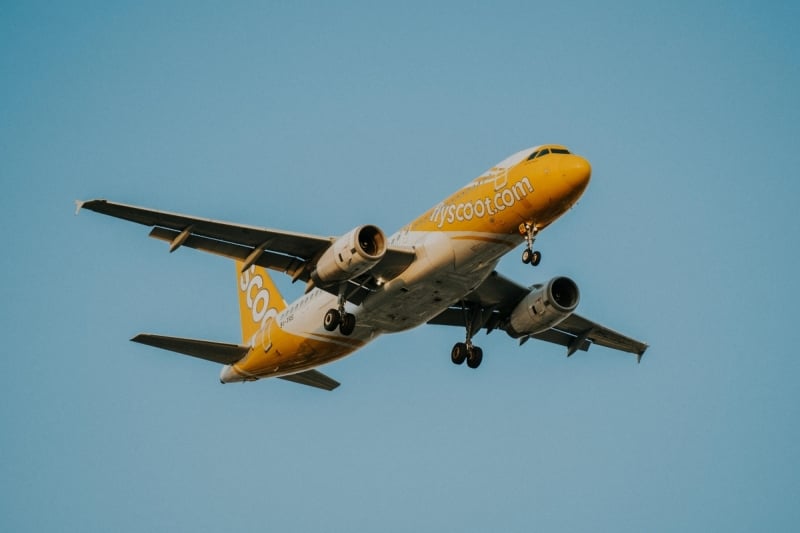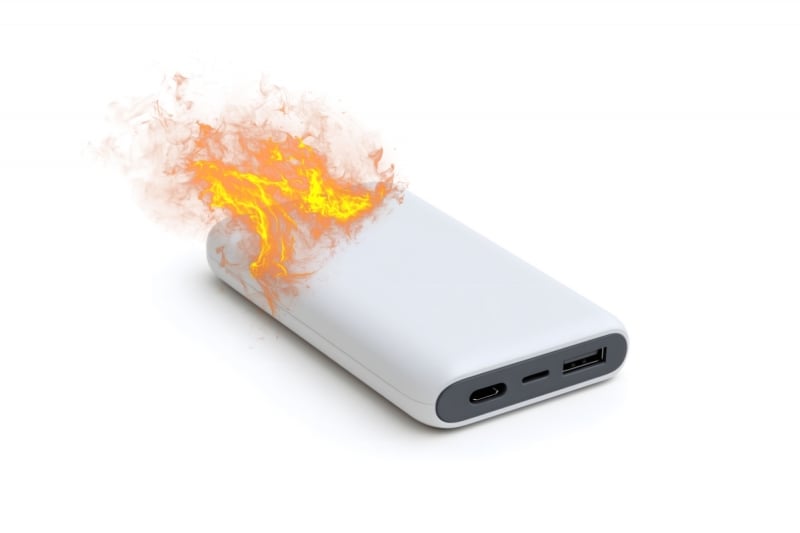A routine flight from Hong Kong to Singapore turned into a tense mid-air scare when a passenger’s power bank overheated and briefly burst into flame, sending a ripple of alarm through the cabin and raising fresh concerns about the safety of lithium-ion devices in the sky. The incident unfolded on the Scoot flight TR939 on 22 November, shortly after departure from Hong Kong.
A sudden blaze at 30,000 feet

Image credit: Screengrabs from XIAOHONGSHU
According to Scoot, the fire originated from an overheated portable power bank carried by a passenger. The device produced a noticeable flame before crew members rushed in with firefighting equipment, extinguishing the fire and isolating the power bank in a secure onboard container.
Footage uploaded to Xiaohongshu later showed cabin crew huddled around a small object on the cabin floor, believed to be the power bank, as it smouldered. Passengers reported smelling burning as the aircraft descended into Singapore, describing the atmosphere as tense but calm thanks to the crew’s controlled response.
Several passengers recalled seeing staff run between the front and back of the aircraft to gather protective gloves, ice, and extinguishers. One witness said the crew placed a black laptop bag containing the device in the aircraft lavatory for safe containment. Only after landing did the captain inform passengers of what had happened.
Confusion and concern among passengers

Image credit: Van Nguyen Hoang via Canva Pro
While the fire was swiftly managed, the emotional impact was clear. Some said they felt uneasy when told to stay seated and avoid taking photos or videos. After the plane reached Singapore, firefighters boarded the aircraft to assess the situation, prompting further disruption as passengers waited to disembark.
One traveller later noticed a visible burn mark near a window seat, suggesting that the faulty power bank had been placed under or beside a seat when it overheated. Scoot later apologised for the disruption and reiterated that passenger safety remains its highest priority. Emergency services had already been placed on standby as the flight prepared to land.
Power bank fires on the rise point to a worsening trend

Image credit: Oksana Latysheva via Canva Pro
Although the aircraft landed safely in Singapore with no injuries reported, the fiery malfunction created moments of panic for passengers and forced emergency protocols into action. This scare is part of a growing pattern.
In Singapore alone, 2024 saw a five-year high in fires linked to power banks, highlighting the dangers posed by poorly manufactured or ageing lithium-ion devices. In response to these rising risks, Singapore Airlines and Scoot rolled out stricter rules earlier this year, banning the use and charging of power banks during flights.
Under the updated policy, power banks must be carried only in cabin baggage, and passengers may not use them with in-seat USB ports. These rules were introduced to minimise the risk of thermal runaway, a dangerous chain reaction that causes lithium-ion cells to overheat, catch fire, or even explode. Experts say that cheaper or uncertified power banks are especially vulnerable, often lacking essential circuitry designed to prevent overheating.
A cautionary tale for travellers
As air travel becomes ever more dependent on personal electronics, incidents like the Scoot fire highlight an urgent need for vigilance. Airlines now face increasing pressure to tighten safety rules further, while passengers are urged to purchase only certified power banks from reputable brands, avoid charging them overnight, and turn them off during flights.
Even a brief flame at cruising altitude is a stark reminder that one small device can have major consequences. For the crew of TR939, quick action prevented a minor scare from turning into a much more serious emergency, but the aviation industry will be watching closely to see whether stricter regulations or design standards are needed to prevent the next battery-related scare in the sky.




